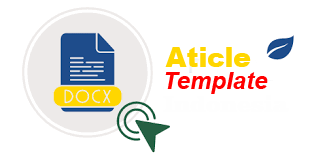Eksperimen Estimasi Biaya Proyek Perangkat Lunak Menggunakan Metode Function Point Analysis (FPA)
DOI:
https://doi.org/10.30865/jurikom.v6i4.1329Abstract
In building software, it should start with project planning. This activity is initialized with estimation activity. When estimation is done, it is necessary to make predictions in the future and handle the uncertainty that will be passed in running a software project. There are several options in project estimation. However, in this study, we used the most common and familiar technique to be tested on project data that had been running in the field. From the results of experiments conducted in the study on 20 (twenty) data software development projects in one of the software houses in Jambi city using the Function Point Analysis (FPA) method, the results of the calculation of the RMSE (root mean squared error) of Rp 1,073,001, - and an error value of 0.25. This means that it can be concluded that the difference in RMSE from the real price comparison transacted in the field with the price estimated using the Function Point Analysis (FPA) method is equal to the value mentioned above, which value includes a value with a fairly small gap. As well, the error value produced is also quite small at 0.25.
References
Y. Pratama and E. Rasywir, “Automatic Cost Estimation Analysis on Datawarehouse Project with Modified Analogy Based Method,†in Proceedings of 2018 International Conference on Electrical Engineering and Computer Science, ICECOS 2018, 2019, pp. 171–176.
J. Sevilla, L. I. Jiménez, and A. Plaza, “Sparse Unmixing-Based Content Retrieval of Hyperspectral Images on Graphics Processing Units,†IEEE Geosci. Remote Sens. Lett., vol. 12, no. 12, pp. 2443–2447, 2015.
S. Kumari and S. Pushkar, “Comparison and Analysis of Different Software Cost Estimation Methods,†Int. J. Adv. Comput. Sci. Appl., vol. 4, no. 1, pp. 153–157, 2013.
F. Fachruddin and Y. Pratama, “Eksperimen Seleksi Fitur Pada Parameter Proyek Untuk Software Effort Estimation dengan K-Nearest Neighbor,†J. Inform. J. Pengemb. IT, vol. 2, no. 2, pp. 53–62, 2017.
S. Kang, “Model-based Dynamic Cost Estimation and Tracking Method for Agile Software Development,†in 9th IEEE/ACIS International Conference on Computer and Information Science Model-based, 2010.
K. Sangeetha and P. P. Dalal, “Analysis of Software Estimation Method : Function point and Use case point,†IJISET, vol. 2, no. 11, pp. 880–884, 2015.
R. Sarno and J. Sidabutar, “Comparison of Different Neural Network Architectures for Software Cost Estimation,†in International Conference on Computer, Control, Informatics and Its Applications Comparison, 2015, pp. 68–73.
S. Shekhar, “Review of Various Software Cost Estimation Techniques,†vol. 141, no. 11, pp. 31–34, 2016.
M. Azzeh, A. B. Nassif, and L. L. Minku, “An empirical evaluation of ensemble adjustment methods for analogy-based effort estimation,†J. Syst. Softw., vol. 103, pp. 36–52, 2015.
E. Rasywir, Y. Pratama, Hendrawan, and M. Istoningtyas, “Removal of Modulo as Hashing Modification Process in Essay Scoring System Using Rabin-Karp,†2018 Int. Conf. Electr. Eng. Comput. Sci., pp. 159–164, 2018.
E. Kocaguneli, E. Kocaguneli, T. Menzies, A. Bener, and J. W. Keung, “Exploiting the Essential Assumptions of Analogy-based Effort Estimation,†IEEE Trans. Softw. Eng., vol. 38, no. 2, pp. 425–438, 2012.








